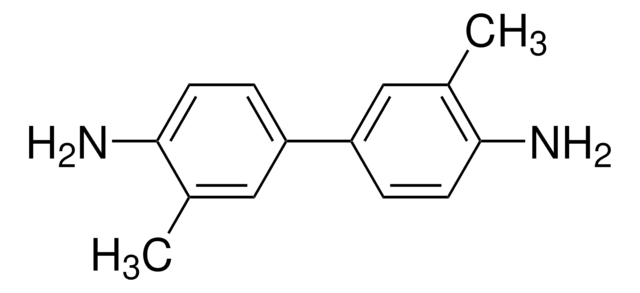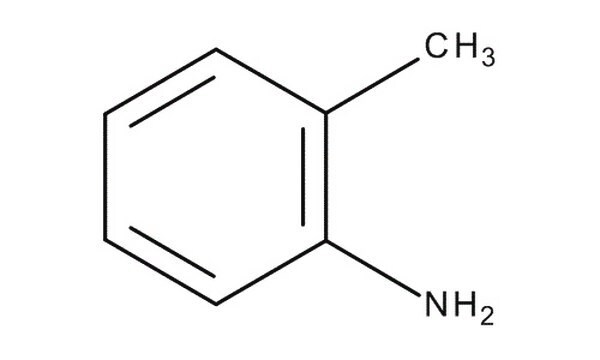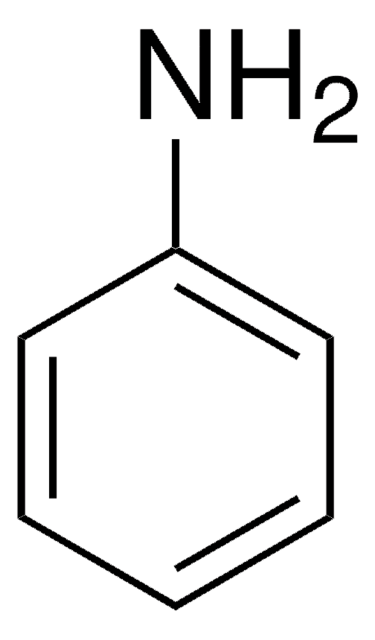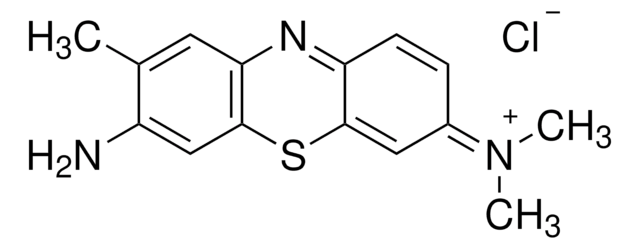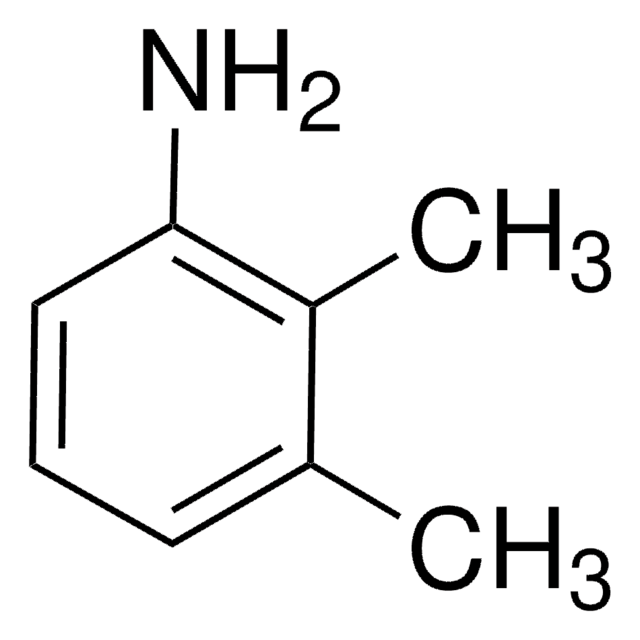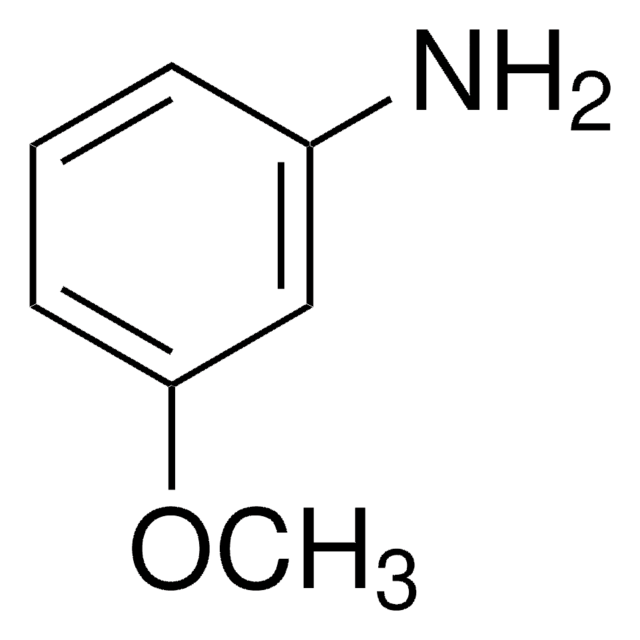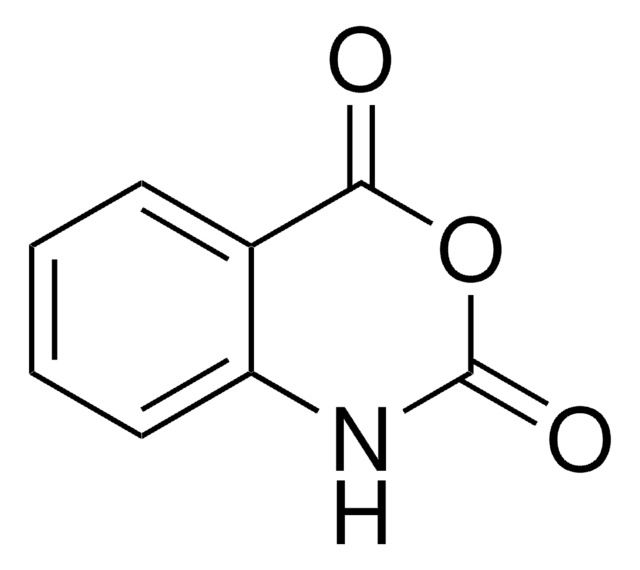89610
o-Toluidine
purum p.a., ≥99.5% (GC)
Synonyme(s) :
2-aminotoluène
About This Item
Produits recommandés
Densité de vapeur
3.7 (vs air)
Niveau de qualité
Pression de vapeur
0.26 mmHg ( 25 °C)
Qualité
purum p.a.
Essai
≥99.5% (GC)
Forme
liquid
Température d'inflammation spontanée
899 °F
Impuretés
≤0.1% water
≤0.5% m- and p-toluidine (GC)
Résidus de calcination
≤0.01% (as SO4)
Indice de réfraction
n20/D 1.572 (lit.)
n20/D 1.572
pb
199-200 °C (lit.)
89-90 °C/11 mmHg (lit.)
Pf
−28 °C (lit.)
Solubilité
H2O: slightly soluble
Densité
1.008 g/mL at 25 °C (lit.)
Traces de cations
Ca: ≤5 mg/kg
Cd: ≤1 mg/kg
Co: ≤1 mg/kg
Cr: ≤1 mg/kg
Cu: ≤1 mg/kg
Fe: ≤1 mg/kg
K: ≤20 mg/kg
Mg: ≤1 mg/kg
Mn: ≤1 mg/kg
Na: ≤20 mg/kg
Ni: ≤1 mg/kg
Pb: ≤1 mg/kg
Zn: ≤1 mg/kg
Chaîne SMILES
Cc1ccccc1N
InChI
1S/C7H9N/c1-6-4-2-3-5-7(6)8/h2-5H,8H2,1H3
Clé InChI
RNVCVTLRINQCPJ-UHFFFAOYSA-N
Vous recherchez des produits similaires ? Visite Guide de comparaison des produits
Description générale
Application
Attention
Mention d'avertissement
Danger
Mentions de danger
Conseils de prudence
Classification des risques
Acute Tox. 3 Inhalation - Acute Tox. 3 Oral - Aquatic Acute 1 - Aquatic Chronic 2 - Carc. 1B - Eye Irrit. 2
Code de la classe de stockage
6.1A - Combustible acute toxic Cat. 1 and 2 / very toxic hazardous materials
Classe de danger pour l'eau (WGK)
WGK 3
Point d'éclair (°F)
185.0 °F - closed cup
Point d'éclair (°C)
85 °C - closed cup
Équipement de protection individuelle
Eyeshields, Faceshields, Gloves, type ABEK (EN14387) respirator filter
Listes réglementaires
Les listes réglementaires sont principalement fournies pour les produits chimiques. Seules des informations limitées peuvent être fournies ici pour les produits non chimiques. L'absence d'indication signifie qu'aucun des composants n'est répertorié. Il incombe à l'utilisateur de s'assurer de l'utilisation sûre et légale du produit.
EU REACH SVHC Candidate List
EU REACH Annex XVII (Restriction List)
Faites votre choix parmi les versions les plus récentes :
Certificats d'analyse (COA)
Vous ne trouvez pas la bonne version ?
Si vous avez besoin d'une version particulière, vous pouvez rechercher un certificat spécifique par le numéro de lot.
Déjà en possession de ce produit ?
Retrouvez la documentation relative aux produits que vous avez récemment achetés dans la Bibliothèque de documents.
Les clients ont également consulté
Protocoles
GC Analysis of Anilines on Equity®-5
US EPA Method 8270 (Appendix IX): GC Analysis of Semivolatiles on Equity®-5 (30 m x 0.25 mm I.D., 0.50 μm)
Notre équipe de scientifiques dispose d'une expérience dans tous les secteurs de la recherche, notamment en sciences de la vie, science des matériaux, synthèse chimique, chromatographie, analyse et dans de nombreux autres domaines..
Contacter notre Service technique

